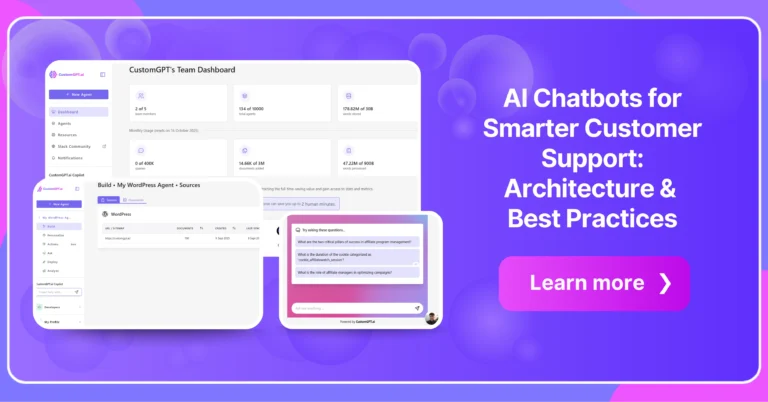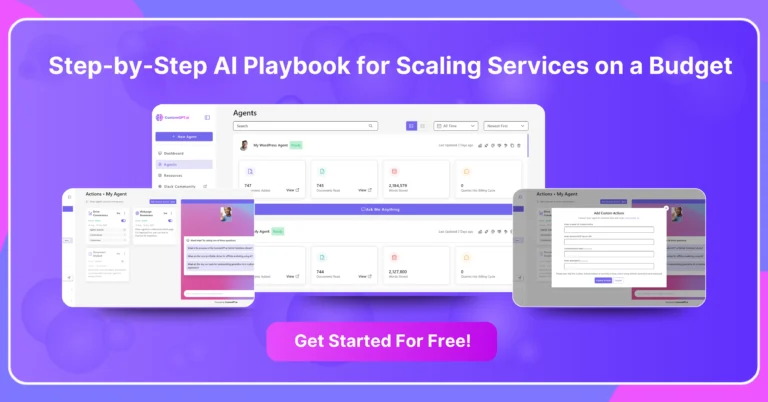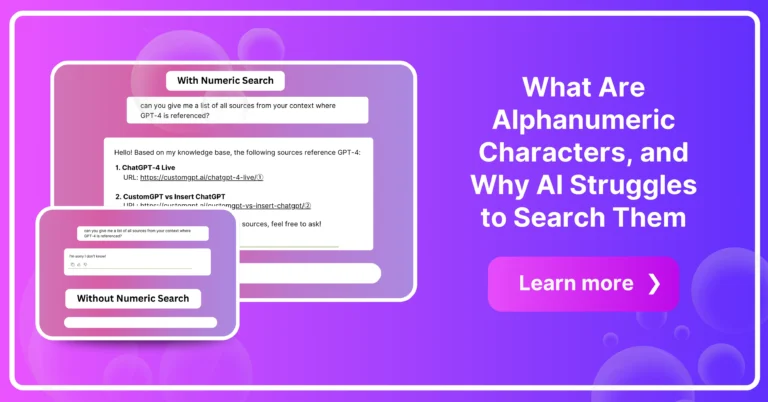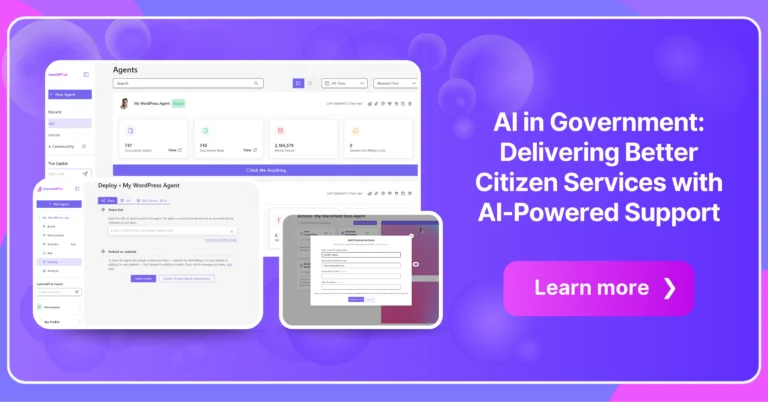Compliance was once a quiet function that lived in the background. Today, it is the pressure point that can stall growth, drain resources, and keep entire industries awake at night.
Regulations no longer arrive in neat, predictable updates, they come in waves, faster than most teams can absorb.
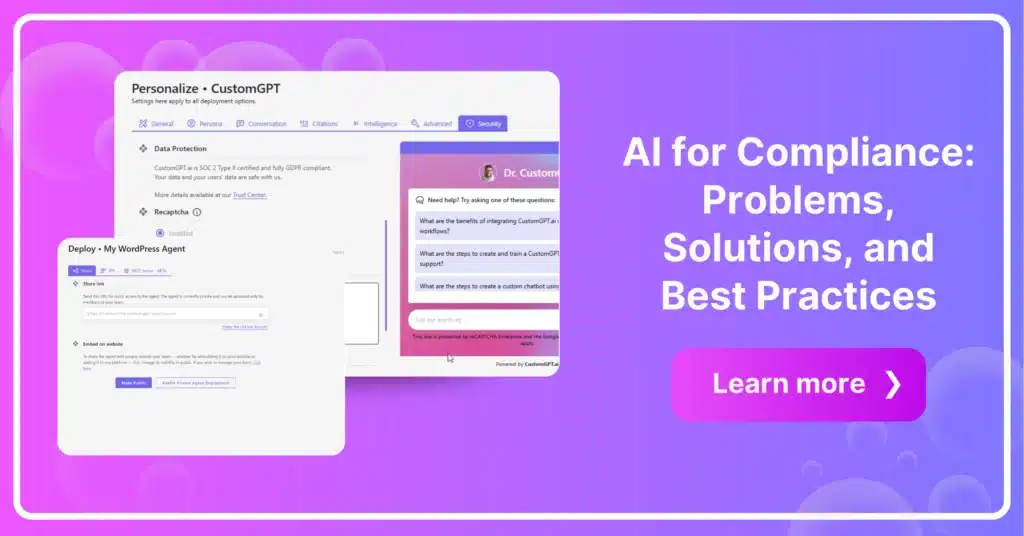
The result is a daily paradox. Organizations know compliance is critical, yet the very systems designed to protect them often slow them down. What should build trust instead creates bottlenecks.
This is where artificial intelligence changes the game. When built on transparency and grounded in trusted sources, AI transforms compliance from a reactive burden into a proactive advantage.
It doesn’t replace experts; it amplifies them, surfacing relevant rules instantly, tracing decisions back to their source, and freeing professionals to focus on judgment rather than paperwork.
Defining AI for Compliance in Plain Language
At its core, compliance in an AI context means making decisions that are both correct and explainable. Traditional frameworks were built on static rules: follow the regulation, document the evidence, move on.
What Is AI for Compliance?
AI for compliance refers to the application of artificial intelligence technologies to help organizations meet regulatory obligations more efficiently and accurately.
Instead of relying solely on manual reviews, static checklists, or fragmented databases, AI enables staff to ask natural-language questions, receive source-backed answers, and generate audit-ready documentation in real time.
At its best, AI for compliance acts as an assistant: it doesn’t replace human judgment, but it augments it, providing clarity, speed, and defensibility in environments where regulations evolve faster than teams can adapt.
Pillars of AI Compliance
AI introduces a new layer of complexity, algorithms make decisions dynamically, and those decisions must not only be accurate but also interpretable.
Three pillars define AI compliance in practice:
Explainability as the Cornerstone
AI must be able to show its work. Techniques such as SHAP or LIME allow organizations to visualize how decisions were made, even in complex models.
This isn’t an academic exercise — regulations like the EU AI Act now mandate explainability for high-risk systems, meaning compliance depends on clarity, not just outcomes.
Data Minimization and Privacy by Design
Collecting “everything, just in case” no longer passes regulatory muster. Rules like GDPR require that only the data necessary for a task be processed.
Techniques such as differential privacy or federated learning allow AI systems to function without over-collecting sensitive information. The payoff is twofold: fewer compliance risks and greater trust from users.
Grounding in Trusted Sources
Generic AI often struggles with hallucinations, but in compliance, unsupported claims are unacceptable. Compliance-ready AI must anchor answers in curated regulations, policies, and operational documents.
This ensures every output is not only accurate but also defensible in an audit or regulatory review.
Taken together, these principles shift compliance from reactive enforcement to proactive enablement.
Instead of scrambling to prove that decisions were valid after the fact, organizations can show regulators a transparent trail of how, why, and on what basis those decisions were made.
Core Challenges Organizations Face
Regulation is meant to safeguard trust, but in practice regulations often create gridlock. The more rules accumulate, the more time organizations spend interpreting, cross-referencing, and verifying, instead of serving customers or advancing their mission.
A McKinsey survey found that 70% of digital compliance projects fail because of IT bottlenecks. If compliance officers can’t adapt the tool themselves, it won’t scale.
Fragmented Knowledge and Manual Processes
Regulatory knowledge is typically scattered across PDFs, databases, and archives. Even simple queries can require hours of searching and cross-checking.
This is why housing associations, healthcare providers, and banks report that routine compliance consumes a disproportionate share of staff time.
Staffing Constraints and Escalations
Many organizations lack full-time legal staff. Administrators or frontline employees handle compliance on the side, escalating questions to senior experts only when they can’t find answers themselves.
What should be a two-minute query often becomes a multi-day delay.
High Stakes and Regulatory Uncertainty
Rules change rapidly. A compliance process that worked last quarter may already be outdated.
In high-stakes industries, “close enough” is never acceptable: a misinterpreted clause in a loan application, a missing guideline in a medical diagnosis, or a delayed housing approval can all result in penalties or reputational harm.
These pressures are not theoretical. In Bavaria, the WohWi AI compliance assistant handled 7,000 queries in its first six months, cutting task time by 50–60% and receiving 84% positive feedback from professionals.
Results like these illustrate the central problem: it isn’t expertise that’s missing, but capacity.
Human judgment remains critical, yet manual processes cannot keep up with the volume, speed, and complexity of modern regulation.
Benefits of AI for Compliance
AI brings tangible advantages to organizations navigating complex regulatory landscapes. Among the most important benefits:
- Faster Decisions: Compliance queries that once took hours of searching can now be resolved in seconds.
- Error Reduction: Automated cross-checking and source-grounding reduce the risk of misinterpretation.
- Audit-Readiness: AI can generate traceable decision trails, making it easier to prove compliance.
- Staff Efficiency: By handling routine lookups, AI frees experts to focus on complex cases.
- Scalability: AI systems can process thousands of queries across multiple regulations, something manual teams cannot sustain.
- Trust and Transparency: Explainable AI builds confidence with both staff and regulators.
These benefits shift compliance from being a bottleneck to becoming a competitive advantage.
Design Principles for Compliance-Ready AI
Technology alone doesn’t make compliance work. What matters is how that technology is designed. Without the right guardrails, AI can create as many risks as it solves.
The following principles form the foundation of compliance-ready systems.
- Citations and Transparency First
Every compliance answer must be anchored in a trusted source. Without verifiable citations, AI becomes a liability. Transparency transforms the conversation: staff gain confidence, regulators see defensibility, and leadership avoids blind spots.
- Audit-Ready Decision Trails
It’s not enough to show what the AI answered, you need to prove how it got there. An audit-ready system generates a traceable record of inputs, logic, and outputs, making it easier to hand regulators a “proof pack” instead of retroactively rebuilding evidence.
- No-Code Configurability
Regulations evolve constantly. If compliance officers have to wait on IT to update systems, they are already behind. AI tools should be configurable without code, so compliance teams themselves can add new regulations and adapt workflows quickly.
- Scalability and Security as Baseline
A compliance assistant must operate under real-world conditions: thousands of queries, role-based access, and strict privacy requirements. Enterprise-grade security standards (ISO, SOC 2, GDPR) should be table stakes, not afterthoughts.
- Rapid Deployment and ROI
Traditional compliance projects can take a year or more to show results. By contrast, modern compliance AI should deliver pilots in weeks and full deployments in under a quarter.
Speed is more than efficiency, it is the only way to keep pace with rules that shift monthly.
Together, these principles shift compliance from reactive defense to proactive enablement. Organizations that design for explainability, agility, and security are not only meeting today’s regulations, they are preparing for tomorrow’s.

Operating Models: People, Process, and Platform
Compliance is not solved by technology alone. It depends on the right balance of people, processes, and platforms working together.
The Role of People in Compliance Oversight
AI is not a replacement for compliance officers, it is an amplifier. Frontline staff can resolve routine queries instantly with AI support, while compliance leaders focus on exceptions and high-value decisions.
The human role becomes oversight and judgment, rather than endless document lookup.
From Manual Lookups to AI-Assisted Workflows
Manual compliance often looks like hours of searching, escalating, and double-checking.
AI transforms this into an “ask-and-answer” workflow: staff pose questions in natural language, and the system returns a precise, source-backed response. This reduces bottlenecks and accelerates everyday tasks without sacrificing accountability.
Choosing the Right Platform: Software, Chatbots, or Both
Here, organizations face a decision.
- Traditional compliance software is strong at record-keeping, structured workflows, and audit trails.
- AI-powered chatbots excel at speed, accessibility, and transparency for frontline staff.
- Hybrid models combine the two, chatbots deliver real-time answers while traditional platforms provide the structured logs regulators demand.
For many organizations, the hybrid model is the practical path. It balances agility with accountability: staff act quickly, and compliance teams still maintain formal oversight.
Quick Wins vs. Strategic Bets
Organizations adopting AI for compliance don’t need to start big — small pilots can build trust quickly before scaling to enterprise-wide systems.
Quick Wins: Pilots that Build Trust
- Start small: Train AI on your top 20–30 most frequent compliance queries. Deliver instant, source-backed answers to prove reliability.
- Build transparency first: Ensure every answer is linked to a regulation or policy document. This helps overcome fears of hallucinations and builds staff confidence.
- Focus on staff adoption: Position AI as an assistant, not a replacement. Early training and clear communication reduce skepticism and cultural resistance.
- Prove ROI early: Demonstrate time savings and reduced escalations within weeks, not months.
Strategic Bets: Preparing for the Future
- Adaptive governance: Design compliance frameworks that evolve alongside regulations, minimizing lag when new rules arrive.
- Scalable infrastructure: Plan for thousands of queries, role-based access, and enterprise-grade security from the start.
- Predictive compliance: Use AI to forecast potential risks and violations before they occur, moving compliance from reactive to proactive.
- Hybrid platforms: Combine AI chatbots with traditional software, ensuring both agility for staff and auditability for regulators.
Adoption barriers such as fear of AI errors, regulatory uncertainty, integration with legacy systems are real, but they are manageable when addressed incrementally.
AI for compliance is not just about keeping pace with regulations, it’s about building resilience and trust for the future
Measuring Success: Compliance KPIs That Matter
Adopting AI for compliance is only the first step. Proving its value requires clear metrics that resonate with both executives and regulators. The right KPIs demonstrate not just efficiency gains but also trust, transparency, and resilience.
- Cycle Time Reduction
One of the clearest indicators is how quickly staff can resolve compliance tasks. Where manual reviews once took hours, AI can deliver source-backed answers in minutes. Tracking turnaround times shows whether the technology is truly unblocking workflows.
- Trust and Adoption Rates
Compliance tools succeed only when people use them. Adoption metrics such as number of queries handled, positive feedback scores, and reduction in escalations,show how much confidence staff place in the system.
When trust grows, so does reliance, freeing experts to focus on complex cases.
- Audit Pass Rates and Risk Mitigation
AI for compliance must stand up under scrutiny. Metrics here include the number of audit-ready decision trails produced, the proportion of AI-assisted tasks that pass regulatory checks without revision, and reductions in error rates.
These KPIs demonstrate that the system not only speeds decisions but also strengthens defensibility.
- Return on Investment
Executives often ask whether AI for compliance pays for itself. Measuring cost savings from reduced staff hours, faster decisions, and fewer fines provides a tangible ROI picture.
What begins as a pilot can quickly prove its value in measurable financial terms.
Together, these KPIs move the conversation beyond “does the tool work?” to “is it transforming compliance into a resilient, trusted capability?” They provide the evidence leaders need to scale adoption and embed AI into the core of compliance strategy.
Frequently Asked Questions
What does AI bring to compliance?
AI helps compliance teams keep pace with regulations that change constantly. Instead of hours of manual searching, it delivers source-backed answers in seconds, complete with audit-ready records.
Does AI replace compliance officers?
No. It automates routine lookups and monitoring but leaves judgment and high-stakes decisions to human experts. Think of it as an assistant that reduces workload and frees professionals to focus on complex issues.
Is AI safe in highly regulated industries?
Yes, when implemented responsibly. By grounding responses in curated regulations and organizational policies, AI ensures outputs are transparent, verifiable, and defensible in audits.
How quickly can AI be deployed in compliance workflows?
With modern no-code platforms, pilots can launch in weeks and full rollouts in under a quarter, far faster than traditional compliance software.
Which industries benefit most?
Sectors with heavy regulatory burdens such as finance, healthcare, housing, and public services are seeing the strongest impact, with faster decisions, fewer manual tasks, and stronger audit readiness.
Conclusion: Building Resilient Compliance with AI
Compliance today is about more than avoiding fines. It is about trust, agility, and accountability in a world where regulations evolve faster than ever.
Manual processes and static software struggle to keep up, but AI-powered compliance systems offer a new path: one where answers are immediate, evidence is built in, and updates happen as quickly as the rules themselves.
The organizations that succeed will be those that treat compliance not as a burden but as a strategic advantage. By combining explainability, transparency, and scalability, AI becomes a foundation for resilience and speed.
Want to see these principles in action? [Read how VdW Bayern DigiSol cut compliance task time by 50%].
Build smarter compliance workflows with AI
Automate compliance queries, ensure accuracy, and scale with confidence.
Trusted by thousands of organizations worldwide





